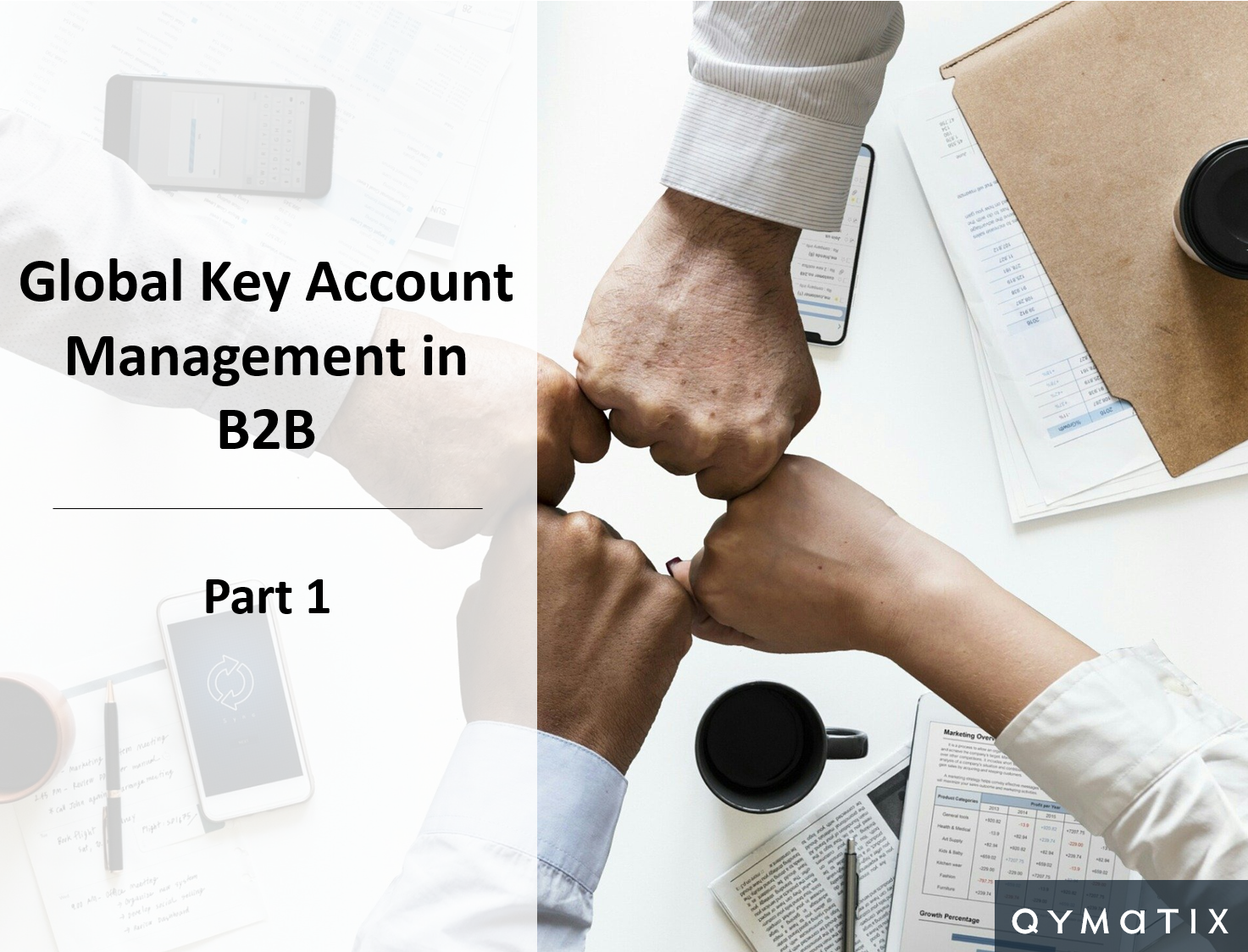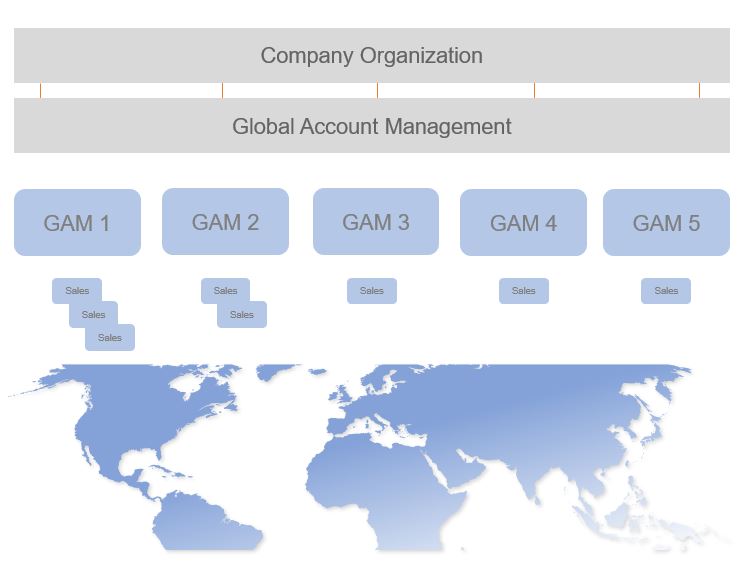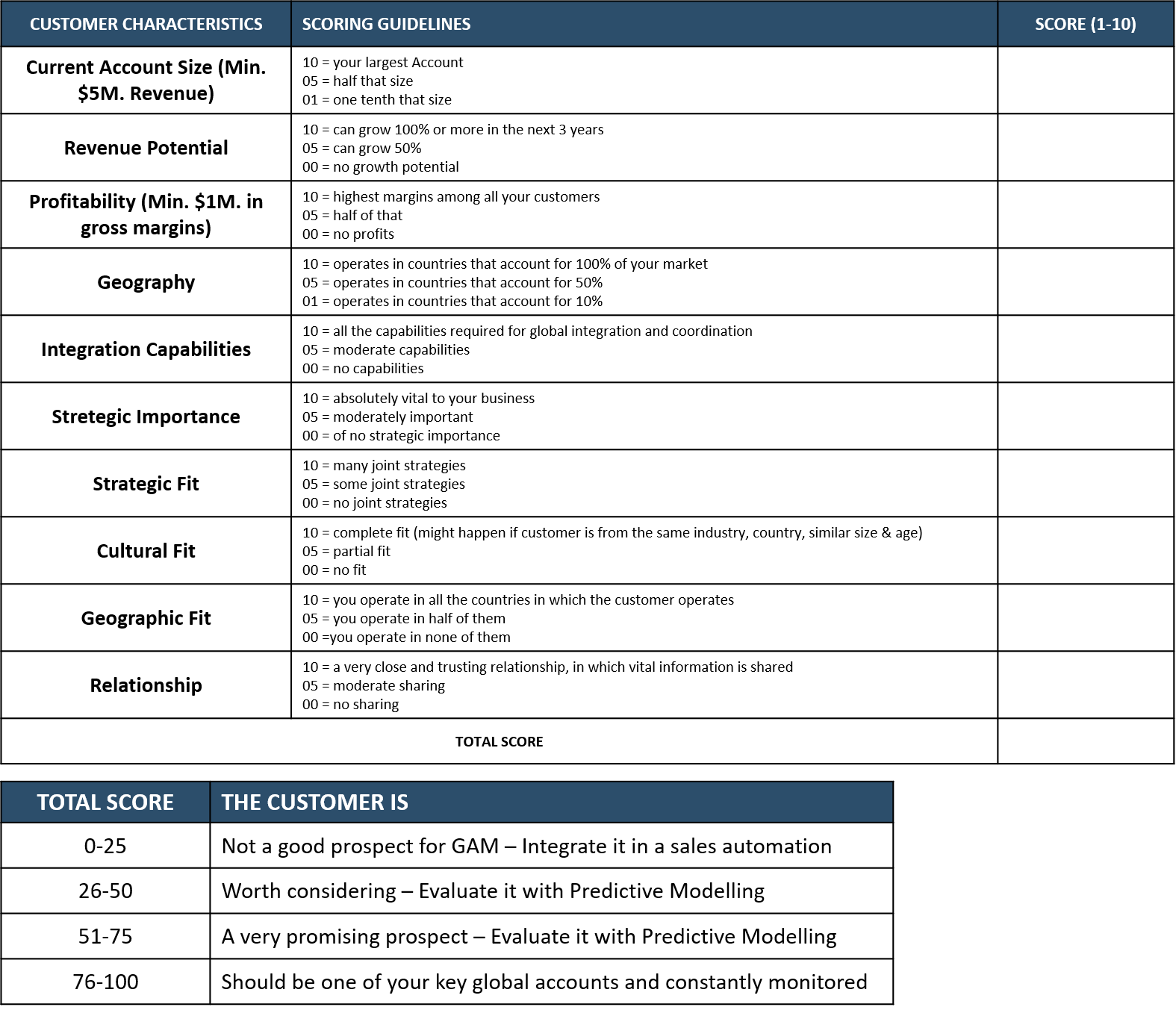Global Key Account Management in B2B Medium-sized Businesses – Part 1

Please enter your Email address
This article has been produced in cooperation with Interim Manger Ralf H. Komor.
Basics every Key Account Manager should know, for a successful introduction of a Global Key Account management strategy in B2B medium-sized business.
Customers are the ones driving the current trends in B2B sales, especially in the SME sector. This course owes to the fact that medium-sized businesses follow, in turn, their clients out into the world.
However, this creates a new situation for suppliers with numerous challenges: they need to adjust and negotiate different prices at country level, offer worldwide support, and need to adapt to the global procurement strategy of their customers. Furthermore, they should make the most significant possible profit from this auspicious situation.
In short: At some point, national key account management is no longer sufficient. It is time for a global or even international account management on the part of the suppliers.
Global Key Account Managers develop customer relationships and track revenue opportunities with Global Key Accounts worldwide.
Large corporations also have a much more centralized organization. Also, communication and collaboration technologies enable them to work much more networked with their locations. For suppliers, this naturally means increased (performance) transparency, but also reveals potential.
Thus, practice shows that many medium-sized companies are facing a change in this respect and confront difficult strategic decisions.
When does the introduction of a Global Account Management (GAM) pay off? Which accounts (clients) are GAM candidates? And how is GAM integrated into a company? Most medium-sized B2B companies in Germany try to satisfy their international clients reactively and do not have a clear global strategy.
For this reason, in this article, we discuss the essentials for the introduction of a GAM.
Tasks of a Global Account Manager
Successful Global Key Account Management (GAM) promotes and intensifies the relationship with your customers and can provide a decisive competitive advantage. However, in the beginning, it is essential to understand that building a GAM is not a small project but requires a new organizational structure.
A GAM (with its employees) is layered over the existing national sales organizations (see figure) and is therefore also associated with unique competencies.

The most important tasks of a successful GAM are to:
– Build and maintain excellent relationships with global customers and internal stakeholders.
– Analysis of all customer requirements.
– Development of solutions for complex problems.
– Support for a variety of services and products.
– Ensure global sales and profitability targets together with the countries to achieve goals.
– Development of global sales strategies to drive growth.
– Development, design and implementation of the roadmaps agreed with the regions or countries.
– Co-developing sales strategies and decision-making processes.
– Work with local teams in the area to identify opportunities for improvement and drive sales plans.
– Cooperation with marketing and regional management to ensure the quality and quantity of sales.
– Development of various global sales projects to continuously improve market performance.
– Close cooperation with national companies on projects and customer issues.
Does the introduction of GAM make sense for your company?
As you can see, setting up a GAM is, first of all, investment and therefore expensive. For this reason, one should plan its introduction throughout.
You can use these four criteria to determine whether a GAM program is suitable for your company:
– Your products or services require global coordination and are profitable enough to justify it.
– Your multinational clients demand a GAM.
– Your international customers are essential to your business.
– You can gain a competitive advantage through GAM.
The nature of one’s offer – not a customer’s desire for volume discounts or global contracts – is the first factor a supplier should consider. The primary candidates include more complex products and services. Offers should have a high margin to cover the additional GAM costs. This last idea means that (potential) global key customers for low-margin products and services should buy in higher volumes or order services to compensate.
It is also advantageous if the products/services are globally consistent or compatible.
So, if the first criterium applies to your company, it is worth taking a closer look at your customers. If some of your international clients are already demanding a GAM, it is far from certain whether they are suitable candidates at all.
Which Global Accounts are GAM candidates?
Not every global client who buys GAM-enabled offerings and is vital to your business should be a Global Account. When it comes to Global Accounts, more is not always better – and there is no ideal number.
For example, Unilever has only five Global Accounts, while IBM has more than 100. Instead of aiming for a specific number, managers should focus on identifying suitable customers.
Based on six criteria, you can check which of your accounts are suitable as GAM candidates.
1. Size and earnings potential.
Of course, the valuation of classic “sales per customer” is very tempting. But here, too, “if it’s too easy, it’s wrong” applies. After all, the biggest mistake a company can make is to select global accounts solely based on current sales to these customers. Some large customers often only want a global discount, a central bonus, and no international relationship.
For this reason, the Marriott hotel chain once cancelled the global account status of its largest customer (worth $100 million in sales).
In general, new additional sales opportunities are more important in the selection of Global Accounts than current sales. A close global relationship results in jointly developed programs that lead to considerable revenue growth in the longer term.
2. Geographical distribution.
A promising GAM candidate should, of course, also be highly internationally active. The international nature of a company can vary: For example, if a business is mainly concentrated in one market (and only a few small businesses outside the home country), it is better to serve this client with some form of comprehensive national account management.
3. Integration capabilities.
A customer should only be offered the status of a global account if they have a corresponding structure for managing international purchases. Without such an organization, a global contract does not mean much: the supplier continues to sell country by country, always renegotiating quantity, price, and other conditions. And despite this additional effort, the customer still expects a global volume discount.
This challenge means that such customers are tough to integrate into a GAM and rarely profitable.
This way, you can identify customers who are difficult to integrate:
– The strategies (business model, products, brands, value chain) are mostly developed at the country level.
– Each national unit prepares its financial statements (balance sheet, profit, and loss statement).
– The managing director of the national company is responsible for almost all activities in the country.
– Most processes represent national variations of the corporate approach.
– Critical information (turnover, profit and market share by business unit, product line and customer) is only collected at the national level.
– Global teams manage only one or two main activities, and there is no common corporate culture.
GAM candidates should, therefore, have a high integration capacity. This point means that the details mentioned above are integrated globally – and not just nationally.
4. Strategic importance.
Global accounts should, in any case, also have strategic importance for the supplier. Here are three examples of strategically critical customers:
– The significant customers: A supplier cannot afford to lose a customer who buys 10% of its total production or 60% of the production of an important product line.
– The contribution of a customer to the fulfilment of his own strategic goals. A manufacturer of copiers, for example, cares less about customers who buy copiers. It has a clear focus on customers who purchase complex office solutions (machines plus consulting services) or document management services (production, storage, and transmission).
– A high level of awareness of the customer. A very well-known customer can also induce other (new) customers to buy from the supplier.
5. Strategic, cultural, and geographical consistency.
It helps when the strategies of the customer match those of the supplier. For example, the two companies Royal Dutch Shell and Wärtsilä had similar plans for expanding sales in India. This fact has led them to enter into joint marketing agreements. Oils and lubricants from Shell and Wärtsilä were sold as a package. The products from each company were advertised to end customers.
A global customer relationship requires a high degree of interaction between the parties involved. For this reason, cultural similarity or at least cultural empathy is also essential. It is not so easy to build a trustful working relationship with a customer who strongly represents performance-oriented values if your company focus more on ecological goals.
Finally, a supplier should be able to serve global customers in most of its key locations. Either through service operations in these countries or by finding reliable local partners to provide the services.
6. A close and trusting relationship.
When a supplier and a customer trust and appreciate each other, the relationship can take off. For example, the French company Schneider Electric invested in a special plant to develop a product line for a preferred global customer. The customer rewarded this move by making Schneider Electric the sole supplier of these products.
Three of these criteria – size and sales potential, geography, and integration capacity – are quantifiable to a certain extent. The last three criteria are soft, and their evaluation depends to a certain extent on gut feeling.
The “Scorecard for Selecting Global Accounts” can help suppliers select the right candidates for Global Account Management.

CALCULATE NOW THE ROI OF QYMATIX PREDICTIVE SALES SOFTWARE
Global Key Account Management Part 1 – Conclusion
Successful companies consider the introduction of a GAM thoroughly. Not every firm with international clients is suitable for Global Account Management. For this reason, you should carry out a detailed analysis of your products and services. Do you have a sufficient margin?
But that is not the end of the analysis. It would be best if you gained a comprehensive understanding of your customers. You can use the six criteria to determine whether they are “GAM-capable”.
Have you concluded that your company is ready? Then look forward to the next part of our Global Key Account series. Here you will learn everything about the detailed implementation and what you should pay particular attention to.
Are you about to change your sales strategy? AI-based data analysis is a valuable tool to get advanced insights from your sales data and to take a look into the future! Please contact us.
CONTACT US TODAY FOR YOUR PERSONAL CALL
Further Read:
Capon, N. (2001): Key Account Management and Planning, New York, Toronto, Sydney.
Drahmann, L. (2018): Relationship Management und Face-to-Face Interaktion im Key Account Management im interkulturellen Vergleich. Universität Bamberg.
Homburg etl al. (2008): Sales Excellence, Wiesbaden.
Hutter, H. (2010): Global Account Management als integriertes Dienstleistungscenter. Universität St. Gallen.
Yip, B. (2007): Managing Global Accounts. Harvard Business Review.